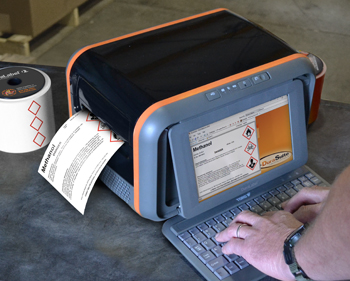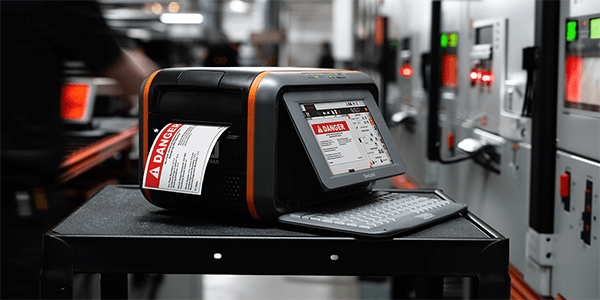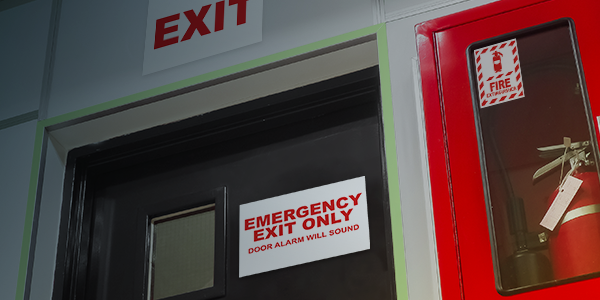Adapting to Multiple Changes in the Workplace

Adaptability in the past year has been quite an abrupt shift for industry in how it operates today and moves forward for tomorrow. Needs seem to frequently change as well as rules, best practices, protocol, and management through a second year of the coronavirus pandemic. However, industry has been slowly propelling forward for all sorts of technological and strategical changes to stay in step or ahead of the global economy. Change is certain, but the pace for change has been chaotic in most workplaces. There are key solutions to help manufacturers, construction, and other industries keep up with frequent and unexpected changes for safety, efficiency, and compliance.
Poised for Change
Industry 4.0 isn't going away. As digital technology advances and security systems evolve, this progress makes way for even bigger changes to come. Part of staying competitive in business requires leadership that is willing to take on challenges and work through the demands of the time. It also requires communication that is up to date, timely, and considers the wellbeing of others. This includes making ways for improved safety, following new compliance standards, and maximizing efficiency.
The National Safety Council says the costs to American employers for preventable workplace injuries are about $120 billion. Improving the workplace should be considered an investment. The benefits are vast. A survey by insurance company Liberty Mutual reveals that most businesses see a 3-to-1 return or better when improving safety. However, the safety aspect is just one part of the formula. Taking care of business goes beyond safety and correlates to overall operating performance.
What holds workplaces back? There are several problems or behaviors to hurdle in making those necessary changes that include time management, budget limitations, established "old" ways of thinking, procrastination, and fear-led decision-making.
Tools and Resources
 To nail these problems, planning and efficiency are the secret sauce. When workplaces plan ahead, it can save time, frustration, and in turn, propel a business to gain footing as Industry 4.0 advances. Creating a budget based on the overarching safety plan is a sure way to stay on track. Projects then are less likely to be delayed and steady progress eliminates backlogs. Also, problems seem to stick when questions are not addressed, or the right equipment is not readily available to help leaders feel confident in changing directions.
To nail these problems, planning and efficiency are the secret sauce. When workplaces plan ahead, it can save time, frustration, and in turn, propel a business to gain footing as Industry 4.0 advances. Creating a budget based on the overarching safety plan is a sure way to stay on track. Projects then are less likely to be delayed and steady progress eliminates backlogs. Also, problems seem to stick when questions are not addressed, or the right equipment is not readily available to help leaders feel confident in changing directions.
One of the top 10 most cited OSHA violations each year is Hazard Communication. For example, a facility might be interested in improving training and maintaining a more uniform labeling system. While they might have tried and failed in the past, there were no resources available for sustainment, such as an organized to-do list or signs and labels unique to the facility's needs. "We'll order those later" or "How do I get the signs I need for complex issues and compliance?"-it's these hurdles that can take any plan down without proper preparation.
Industrial sign and label printers increase facility-wide project mobility and convenience for frequent on-the-spot updates for national compliance or local needs. While high-quality, premade industrial communication kits provide bundled best practice solutions.
Companies that adapt to frequent changes in the business climate will benefit. Strengthening a business for those changes requires being ready for anything. Having tools on hand help make businesses smarter, faster, and nimbler for safety, efficiency, and all other facets necessary for the future.
Related Resources

Top 10 Uses for DuraLabel Industrial Label Printers
How DuraLabel Printers are Used Across 10 Key Industrial Applications DuraLabel printers are built to solve ...
Read
Understanding OSHA Citations: Common Violations and Penalties
OSHA citations are routinely given to companies throughout the United States. Organizations large and small ...
Read
OSHA Fire Readiness Essentials for Any Workplace
What Are Fire Safety Procedures and Why Do They Matter in the Workplace? Fire safety remains a critical ...
Read.png)





